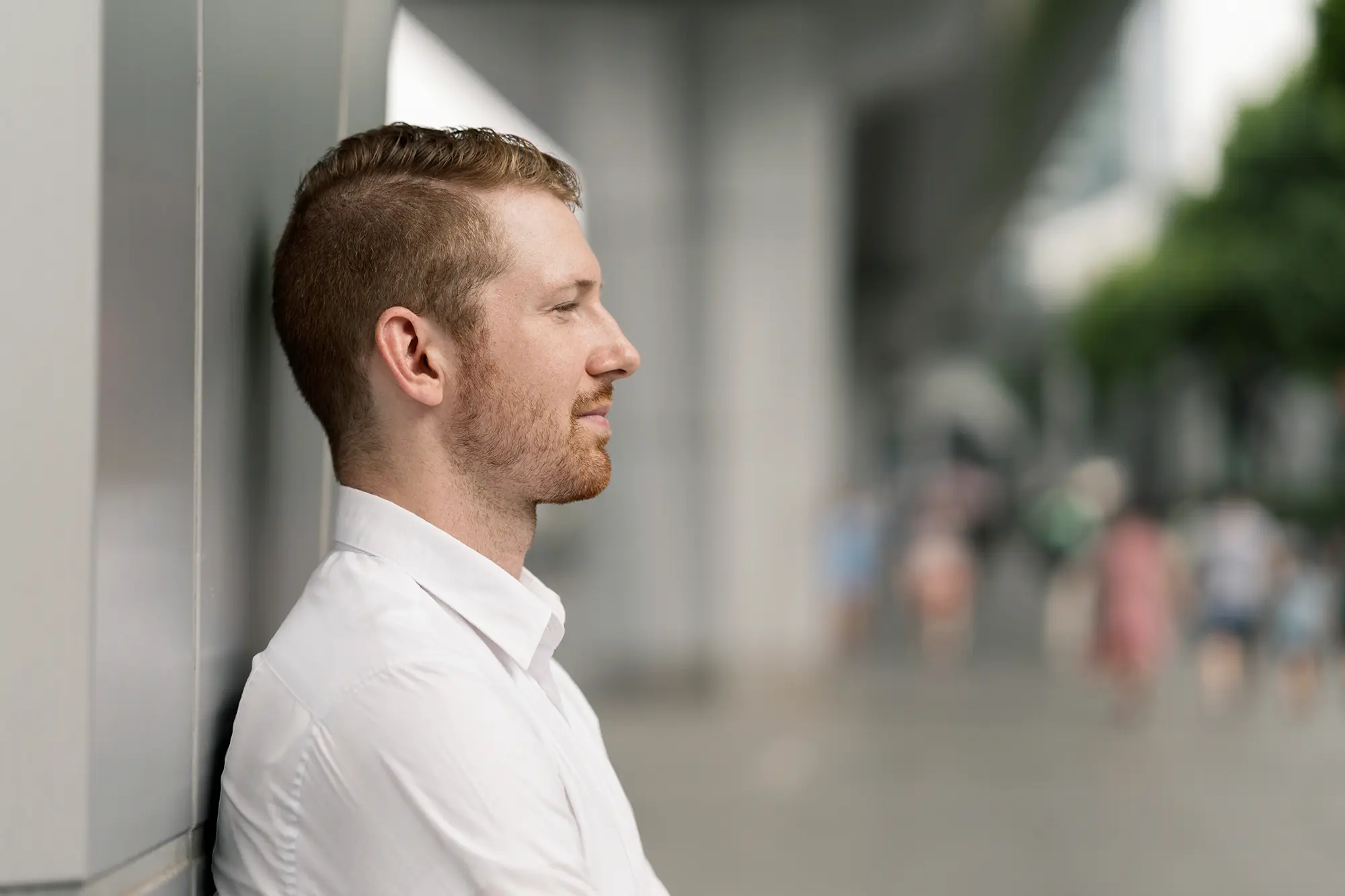Cognitive Behavioral Therapy vs. Medication: A Holistic Perspective on Anxiety Treatment
June 16, 2025
When facing anxiety, choosing the right treatment approach is one of your most important decisions. The debate between Cognitive Behavioral Therapy (CBT) and medication has dominated mental health discussions for decades, but the reality is more nuanced than simply choosing one over the other. As someone who has spent over three decades treating anxiety disorders, I’ve witnessed firsthand how both approaches can transform lives and how combining them often yields the most profound results.
Understanding your treatment options isn’t just about symptom relief; it’s about reclaiming your life from anxiety’s grip and building lasting resilience. Let’s explore the evidence-based differences between CBT and medication, while considering how a holistic approach can offer the most comprehensive path to healing.
Understanding Anxiety: The Foundation for Treatment Choice
Before diving into treatment comparisons, it’s crucial to understand what anxiety truly represents. Anxiety isn’t simply worry or nervousness; it’s a complex interplay of thoughts, emotions, physical sensations, and behaviors that can significantly impact daily functioning.
The research reveals striking statistics about anxiety disorders: approximately 301 million people worldwide struggle with anxiety, making it the most common mental health condition globally [1]. In the United States alone, anxiety affects about 40 million adults annually, yet only about 27% receive treatment [1].
As noted in my book 7 Answers for Anxiety
“Anxiety is defined as ‘a painful or apprehensive uneasiness of the mind, usually over an impending or anticipated ill; a fearful concern or interest; an abnormal or overwhelming sense of apprehension and fear often marked by physiological signs.”
Cognitive Behavioral Therapy has emerged as what many consider the “gold standard” for anxiety treatment. Approximately 70% of individuals who complete CBT report satisfaction with their treatment outcomes, with dropout rates as low as 20% [2].
How CBT Works: Rewiring Anxious Thoughts
CBT operates on a fundamental principle: our thoughts, feelings, and behaviors are interconnected. When anxiety takes hold, it often creates what I call in 7 Answers for Anxiety a “thought-life” dominated by catastrophic thinking.
“Anxiety accelerates the common into the cataclysmic at rapid speed. Anxiety, then, is produced not by what you actually experience but by what you tell yourself.”
CBT addresses this by:
- Identifying thought patterns: Recognizing when anxiety distorts reality
- Challenging cognitive distortions: Questioning the validity of anxious thoughts
- Behavioral experiments: Testing fearful predictions in safe environments
- Skill building: Developing coping strategies for managing symptoms
CBT’s Strengths
Long-term effectiveness: Unlike medication, CBT provides tools patients can use long after therapy. Research shows benefits persist for months or years after treatment completion [3].
Addressing root causes: CBT doesn’t just mask symptoms; it tackles the underlying thought patterns and behaviors that fuel anxiety.
Low side effects: CBT’s primary “side effects” are increased self-awareness and improved coping skills.
Empowerment: Patients learn to become their own therapist, developing confidence in their ability to manage anxiety independently.
CBT’s Limitations
Time investment: Effective CBT typically requires 12-20 sessions spanning several months.
Initial discomfort: Facing fears and challenging thoughts can initially increase anxiety before improvement occurs.
Requires active participation: Success depends on completing homework assignments and practicing skills between sessions.
Not immediately effective: Unlike some medications, CBT benefits typically emerge gradually over several weeks.
Medication: The Biochemical Approach
Anxiety medications work by targeting neurotransmitter systems in the brain, primarily serotonin, norepinephrine, and GABA. Current research shows that while effective, about one-third of patients have treatment-refractory anxiety despite medication trials [4]. Treatment-refractory anxiety occurs when standard treatments are properly delivered, but there is either no response to the medication or the medications prove to be only marginally effective.
SSRIs and SNRIs: First-Line Treatment
Selective Serotonin Reuptake Inhibitors (SSRIs) and Serotonin-Norepinephrine Reuptake Inhibitors (SNRIs) are considered first-line pharmacotherapy for most anxiety disorders [5]. These medications work by increasing the availability of neurotransmitters associated with mood regulation.
Effectiveness: Meta-analyses show the moderate effects for SSRIs and SNRIs in treating anxiety disorders, are large enough to prove meaningful, with sustained improvement over time.
Timeline: Benefits typically emerge after 4-6 weeks of consistent use, with optimal effects often seen at 8-12 weeks.
Side effects: Common side effects include nausea, headaches, sleep disturbances, and sexual dysfunction. Most side effects diminish over time.
Benzodiazepines: Rapid Relief with Risks
Benzodiazepines provide quick anxiety relief by enhancing GABA activity, but they’re no longer considered first-line singular therapy due to the risk of creating medication dependence [6]. Recent research shows benzodiazepines produce faster initial improvement than SSRIs/SNRIs, but all treatments yield similar results by week 8 [7].
Benefits:
- Rapid onset of action (within hours)
- Highly effective for acute anxiety episodes
- Useful for short-term crisis management
Risks:
- High potential for dependence and tolerance
- Cognitive impairment and drowsiness
- Dangerous when combined with alcohol
- Withdrawal symptoms when discontinuing
The Medication Paradox
While medications can provide crucial relief, they don’t address the underlying psychological factors that maintain anxiety. As noted in 7 Answers for Anxiety,
“When you choose to listen to the voice of anxiety and the voice of negativity, you feed the monster and starve your soul.”
Medication can quiet the “monster” temporarily, but true healing often requires addressing the deeper patterns that fuel anxiety.
CBT vs. Medication: Head-to-Head Comparisons
When researchers compared CBT and medication across hundreds of studies involving tens of thousands of patients, they found some surprising results. At first glance, medications appeared to produce more dramatic improvements than therapy. However, this doesn’t tell the whole story [8].
The key issue is what researchers call the “placebo effect”. People often feel better simply because they believe they’re receiving treatment. When scientists account for this by comparing treatments to inactive placebos (the gold standard in medical research), the picture becomes clearer. Both CBT and medication prove genuinely effective beyond just the placebo effect, but the differences between them are more nuanced than initial studies suggested [9][10].
The bottom line: Both approaches work, but they work differently and offer distinct advantages depending on your specific situation and goals.
Key Comparison Points:
| Aspect | CBT | Medication |
| Onset of Action | 4-8 weeks | 2-6 weeks (varies by type) |
| Long-term Benefits | Often sustained after treatment ends | Requires ongoing use |
| Side Effects | Minimal; a temporary increase in anxiety is possible | Variable; can include sexual dysfunction, weight changes, withdrawal symptoms |
| Relapse Prevention | Strong evidence for sustained improvement | Higher relapse rates when discontinued |
| Treatment Resistance | About 30% don’t respond adequately | About 33% don’t respond to the first medication trial |
| Cost | Higher upfront cost, lower long-term | Lower initial cost, ongoing expense |
The Holistic Perspective: Beyond Either/Or
The most compelling evidence points toward a more nuanced approach than simply choosing CBT or medication. In my comprehensive work on anxiety, I emphasize that true healing addresses the whole person, emotional, intellectual, relational, physical, and spiritual dimensions.
The Integrated Approach
Research increasingly supports combining CBT and medication, particularly for severe anxiety or when rapid stabilization is needed. The benefits of this approach include:
Faster initial relief: Medication can provide quicker symptom reduction while CBT skills develop.
Enhanced learning: Reduced anxiety from medication may improve the ability to engage with CBT techniques.
Comprehensive coverage: Addressing both biological and psychological factors that maintain anxiety.
Flexibility: Treatment can be adjusted based on individual response and needs.
The Whole-Person Framework
Drawing from my book 5 Keys to Dealing with Depression, I propose a five-key approach that applies equally well to anxiety treatment:
- Emotional Balance: Using CBT techniques to develop emotional regulation skills
- Intellectual Integrity: Challenging anxiety-provoking thought patterns and beliefs
- Relational Support: Building healthy connections and communication skills
- Physical Healing: Addressing lifestyle factors that impact anxiety (nutrition, exercise, sleep)
- Spiritual Hope: Finding meaning and purpose beyond anxiety symptoms
Addressing Physical Factors
Often overlooked in the CBT vs. medication debate are the physical contributors to anxiety. As noted in 7 Answers for Anxiety:
“The body is not merely along for the ride into anxiety. The body is an active participant, able to aggravate or improve symptoms.”
Physical factors that can influence anxiety include:
- Hypoglycemia and blood sugar instability
- Thyroid disorders
- Caffeine sensitivity
- Nutrient deficiencies
- Food allergies and sensitivities
- Sleep disorders
- Hormonal imbalances
Addressing these factors can significantly enhance the effectiveness of both CBT and medication approaches.
Making the Right Choice for You
The decision between CBT and medication, or their combination, should be individualized based on several factors:
Consider CBT When:
- You prefer non-pharmacological approaches
- You have mild to moderate anxiety symptoms
- You want to develop long-term coping skills
- You’re motivated to participate in treatment actively
- You want to address underlying thought patterns
- Previous medication trials have been ineffective or poorly tolerated
Consider Medication When:
- Symptoms are severe and impair daily functioning
- You need rapid symptom relief
- CBT alone has been insufficient
- You have comorbid depression
- Panic attacks are frequent and intense
- You cannot engage effectively in therapy due to symptom severity
Consider Combined Treatment When:
Symptoms are severe or complex
Previous single-modality treatments have been partially effective
You want both immediate relief and long-term skills
You have multiple anxiety disorders
There’s a significant functional impairment
The Role of Treatment Resistance
Both CBT and medication face the challenge of treatment resistance. Approximately one-third of anxiety patients don’t respond adequately to either approach alone [4]. This highlights the importance of:
- Accurate diagnosis: Ensuring co-occurring conditions are identified and treated
- Adequate treatment trials: Both CBT and medication require sufficient duration and intensity
- Addressing comorbidities: Treating depression, substance use, or trauma simultaneously
- Lifestyle modifications: Incorporating physical health strategies
- Alternative approaches: Considering newer treatments when traditional methods fail
Emerging Perspectives: Beyond Traditional Boundaries
The future of anxiety treatment lies not in the either/or debate but in personalized, precision medicine approaches that consider:
Genetic Factors
Pharmacogenomic testing can help predict medication response and side effect profiles, allowing for more targeted prescribing.
Biomarkers
Research is identifying biological markers that predict CBT response, allowing clinicians to match patients to optimal treatments.
Technology Integration
Digital CBT platforms, virtual reality exposure therapy, and AI-enhanced treatment matching are expanding accessibility and effectiveness.
Personalized Medicine
Understanding individual differences in neurobiology, psychology, and life circumstances to tailor treatment approaches.
Practical Implementation Strategies
Starting Your Treatment Journey
- Comprehensive Assessment: Work with a qualified mental health professional to evaluate your specific anxiety presentation, severity, and contributing factors.
- Set Realistic Expectations: Both CBT and medication require time to show full benefits. Be patient with the process.
- Consider Your Resources: Evaluate factors like time availability, financial resources, and support systems.
- Track Your Progress: Keep a mood and anxiety diary to monitor improvements and identify patterns.
- Maintain Open Communication: Stay in regular contact with your treatment team about your response and any concerns.
Maximizing Treatment Success
Regardless of your chosen approach, certain factors enhance treatment outcomes:
- Consistency: Regular attendance at therapy sessions or medication compliance
- Lifestyle Integration: Incorporating stress management, exercise, and healthy sleep habits
- Social Support: Engaging family and friends in your recovery process
- Self-Advocacy: Communicating openly about what’s working and what isn’t
Frequently Asked Questions
How long does it typically take to see results from CBT versus medication?
CBT typically shows gradual improvement over 6-12 weeks, with skills continuing to develop throughout treatment. Medication effects often begin within 2-6 weeks, though optimal benefits may take 8-12 weeks. Some people notice immediate relief from certain medications like benzodiazepines, but these aren’t recommended for long-term use.
Can I start with one treatment and add the other later?
Absolutely. Many people begin with either CBT or medication and later add the other modality if needed. This sequential approach allows you to assess how you respond to each treatment individually and can be particularly useful if you’re initially hesitant about combination therapy.
What should I do if neither CBT nor medication seems to be helping?
Treatment-resistant anxiety affects about one-third of patients. If standard approaches aren’t working, consider: reassessing your diagnosis with a specialist, exploring whether trauma or other conditions are contributing factors, investigating physical health issues that might be fueling anxiety, or trying newer treatment modalities like ketamine therapy or intensive outpatient programs.
Are there any situations where one approach is better than the other?
CBT may be preferred for those wanting to avoid medication side effects, pregnant or nursing women, individuals with substance use histories, or those seeking long-term skill development. Medication might be preferred when symptoms are too severe to engage in therapy effectively, when rapid stabilization is crucial, or when multiple failed therapy attempts have occurred.
How do I find qualified practitioners for CBT or psychiatric medication management?
Look for licensed psychologists or clinical social workers with specific CBT training for therapy and board-certified psychiatrists or psychiatric nurse practitioners for medication management. Professional organizations like the Association for Behavioral and Cognitive Therapies (ABCT) and the American Psychiatric Association offer provider directories.
Conclusion: A Path Forward
The debate between Cognitive Behavioral Therapy and medication for anxiety treatment represents a false dichotomy. Both approaches have substantial evidence supporting their effectiveness, and both have limitations. The future lies not in choosing one over the other, but in creating personalized treatment plans that may include either or both modalities, supplemented by holistic approaches that address the whole person.
As I’ve emphasized throughout my decades of practice, anxiety doesn’t exist in isolation; it affects and is affected by every aspect of our being. The most effective treatment approaches recognize this interconnectedness and work to restore balance across emotional, physical, relational, and spiritual dimensions.
Whether you choose CBT, medication, or a combination approach, remember that seeking help is a sign of courage, not weakness. With the right treatment plan, the overwhelming majority of people with anxiety disorders can achieve significant improvement and reclaim their lives from anxiety’s grip.
The key is working with qualified professionals who can help you navigate the options and create a plan tailored to your unique needs, circumstances, and goals. Your journey to freedom from anxiety may not be quick or easy, but with persistence and the proper support, it is possible.
References
[1] World Health Organization. (2023). Anxiety disorders. WHO Fact Sheets. Retrieved from https://www.who.int/news-room/fact-sheets/detail/anxiety-disorders
[2] Crown Counseling. (2024). CBT Success Rate Statistics: Effectiveness of CBT in 2024. Retrieved from https://crowncounseling.com/statistics/cbt-success-rate-statistics/
[3] Otte, C. (2011). Cognitive behavioral therapy in anxiety disorders: current state of the evidence. Dialogues in Clinical Neuroscience, 13(4), 413-421.
[4] Anxiety and Depression Association of America. (2022). SSRIs and Benzodiazepines for General Anxiety Disorders (GAD). Retrieved from https://adaa.org/learn-from-us/from-the-experts/blog-posts/consumer/ssris-and-benzodiazepines-general-anxiety
[5] Cuijpers, P., et al. (2023). Efficacy of Cognitive Behavioral Therapy for Anxiety-Related Disorders: A Meta-Analysis of Recent Literature. Current Psychiatry Reports, 25, 25-35.
[6] National Institute of Mental Health. (2022). Anxiety Disorders. Retrieved from https://www.nimh.nih.gov/health/topics/anxiety-disorders
[7] Mendez, E. M., et al. (2024). Trajectory and magnitude of response in adults with anxiety disorders: a Bayesian hierarchical modeling meta-analysis. CNS Spectrums, 29(3), 187-196.
[8] Bandelow, B., et al. (2015). Efficacy of treatments for anxiety disorders: a meta-analysis. International Clinical Psychopharmacology, 30(4), 183-192.
[9] Carpenter, J. K., et al. (2018). Cognitive behavioral therapy for anxiety and related disorders: A meta-analysis of randomized placebo-controlled trials. Depression and Anxiety, 35(6), 502-514.
[10] Cuijpers, P., et al. (2023). Efficacy of Cognitive Behavioral Therapy for Anxiety-Related Disorders: A Meta-Analysis of Recent Literature. Current Psychiatry Reports, 25, 25-35.
OTHER POPULAR ARTICLES

Alternative Approaches to Treatment-Resistant Depression: Holistic Strategies When Traditional Methods Fall Short
When standard treatments for depression fail to provide relief, the journey toward healing can feel overwhelming and discouraging. Treatment-resistant depression (TRD) affects approximately 30%...

Dialectical Behavior Therapy Techniques for Depression: Finding Balance and Healing
Depression can feel like being trapped in a dark room with no doors or windows, a place where hope seems distant and joy feels...

Holistic Approaches to Stress Rash: Mind-Body Techniques for Skin and Emotional Health
When your body speaks, it's wise to listen. A sudden rash appearing during times of high stress isn't merely a cosmetic inconvenience; it's your...